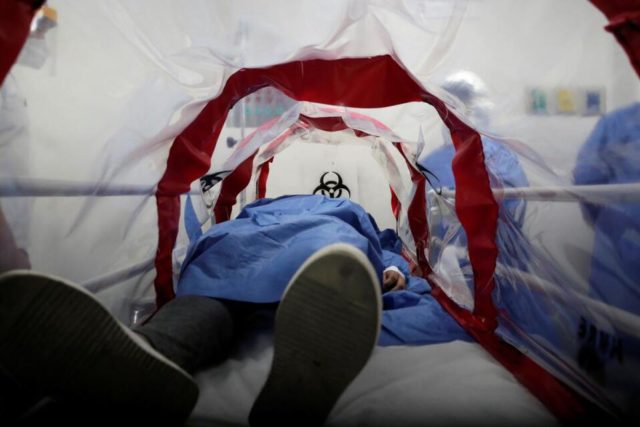A donation ceremony of anti-epidemic objects was held at the Wuhan Revolutionary Museum on Monday, the 44th International Museum Day, as part of its special activities to mark the day.
WUHAN – Since mid-March, Gao Wan’e has been busy collecting items demonstrating China’s collective efforts in the combat against the novel coronavirus epidemic with her colleagues in Wuhan, previously the hardest-hit city in central China’s Hubei Province.
Gao, curator of the Wuhan Revolutionary Museum, said they had received more than 9,600 pieces of material evidence from patients and other members of the public, as well as organizations including hospitals, airports and construction enterprises.
Items including protective suits with signatures of medical teams from all over the country, souvenir boarding passes for medical workers when they left Wuhan, boots worn by military medics when they worked at Huoshenshan Hospital, ventilators and other medical equipment are included in the collection list.
Now, all the anti-epidemic objects have been stored in a temporary warehouse at the museum after being disinfected. Wearing goggles and her protective suit, Hu Dan, a staffer with the museum, has been sorting out and registering the latest collections in the past months.
“We are in contact with the materials collected from the front line of the fight against the virus every day. Although we are also worried about being infected, we still insist on doing this work, hoping to leave something for our future generations and record the precious memories,” she said.
The collection that struck her most was donated by an old man from the city of Qiqihar, northeast China’s Heilongjiang Province. On the afternoon of April 22, the museum received a special delivery without any recipient or address.
It contained a letter and a portrait of Zhong Nanshan, a renowned 84-year-old respiratory specialist who had been fighting COVID-19 at the front line. In the letter, Fu Mingxing, 85, who used to be an artist in Qiqihar Library, wrote that he was saddened to see the Hubei people suffering from the epidemic.
Although he was unable to help Wuhan with money because of financial constraints, he hoped the painting, which took him three days to finish, could cheer the city up. “As long as the delivery can be sent to the Wuhan people, I will be relieved,” he said.
After getting his permission, Huang Jingyu, a worker with Best Express, one of the major courier companies in China, contacted the media and finally sent the parcel to the Wuhan Revolutionary Museum, which was eagerly seeking mementos.
“The people in Wuhan made great sacrifices in the resolute fight against the epidemic. But what I can do for them is too little. Thank you, Wuhan,” Fu said when the curator thanked him on a video call.
A donation ceremony of anti-epidemic objects was held at the Wuhan Revolutionary Museum on Monday, the 44th International Museum Day, as part of its special activities to mark the day.
Workers and volunteer representatives from all walks of life in Wuhan who had participated in the anti-virus fight told touching stories behind the objects at the ceremony.
Curator Gao said never before has the museum been so constructively involved in the political, social and cultural issues of modern society as a means of strengthening its ties to society.
Since March, a dozen museums in Hubei including the Wuhan Revolutionary Museum have actively solicited from the public various material evidence of the country’s efforts to curb the spread of COVID-19. As of May 15, a total of more than 20,000 items had been collected.








